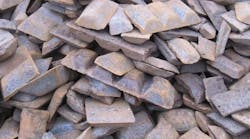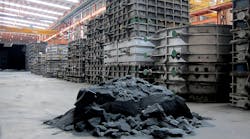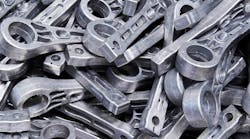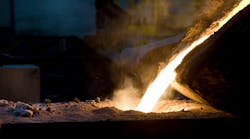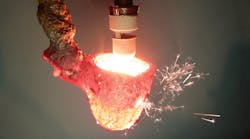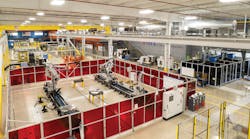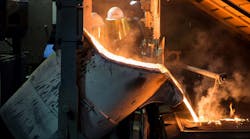SinterCast AB reported that its licensees’ output of compacted graphite iron continued to increase during April to “an all-time monthly high” annual rate of 140,000 metric tons (i.e., 2.7 million 50-kg “engine equivalents”.) This is the second-consecutive monthly record for SinterCast CGI series production, and indicates a four-month annualized production rate of 2.6 million engine equivalents — 130,000 metric tons — for 2018, a 30% year-on-year increase.
Also during April, SinterCast reported shipments of its sampling cups also increased to a record 29,400 units, a 61% increase in year-to-date shipments.
Stockholm-based SinterCast supplies process control technology for producing CGI — a grade of cast iron that has greater tensile strength, stiffness, and fatigue strength than gray iron or aluminum. CGI is mainly used by diesel and gas engine manufacturers seeking to reduce weight, noise, and emissions for their designs.
“With the start of production of a handful of new programs in 2018, plus the recovery of some key high-volume programs, our production has increased by approximately 25% and established a ‘new normal’ for our series production baseline. The increased production puts us solidly on track to return to double-digit series production growth this year, while the planned roll-out of new SinterCast-CGI programs reaffirms our confidence for a positive outlook well beyond 2018,” according to president and CEO Dr. Steve Dawson.
SinterCast also supplies tracking technologies for foundry operations, and reported that in May the Scania foundry at Södertälje, Sweden, ordered an installation of the SinterCast Cast Tracker™, following a successful trial of that technology late last year. The process follows the progress of molds in a foundry from sand filling through to core setting, with five different measurement positions to trace mold production and to correlate sand properties to the mold identification.
The Scania installation will be finalized during Q3 2018, for molds for gray iron and CGI castings. Discussions are ongoing with Scania to expand the system to trace core production, too, SinterCast noted.
